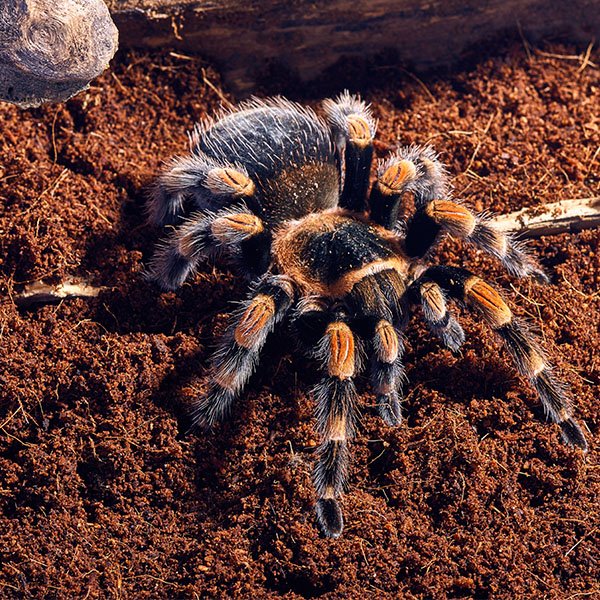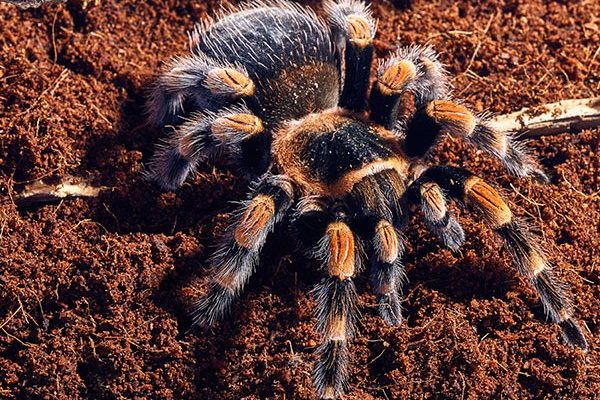
The Mexican redknee tarantula, known scientifically as *Brachypelma smithi*, is native to the arid regions of Mexico. It thrives in a variety of environments, from dry, scrubby landscapes to tropical forests. Just picture it, scuttling about in the underbrush, living its best life far away from the hustle and bustle of modern civilization. In this article, we’ll journey through its native habitats, understand its environmental needs, and uncover what makes this species so special.
Natural Habitat of the Mexican Redknee Tarantula
The Mexican redknee tarantula usually prefers dry, open areas, but it can also be found in a range of ecological zones. You might wonder, “What does that really look like?” Well, think of regions with sandy soil, shrubbery, and a mix of rocky outcrops—an ideal playground for these tarantulas. They typically make their homes in burrows that they dig, which help shield them from extreme weather and predators.
Some common habitats include:
- Dry forests
- Scrublands
- Grasslands
Each of these environments offers the warm temperatures that this spider loves. You won’t find them in the high mountains or wet, swampy areas. Instead, they are more at home in sunny spots where they can thrive.
Geographic Distribution
When it comes to geography, the Mexican redknee tarantula is primarily found in the western part of Mexico, particularly in the states of Jalisco and Colima. Here’s the thing: these areas have the right combination of warm temperatures and specific vegetation types that help support the species.
The redknee tarantula’s distribution can range from semi-arid regions to lush forests, demonstrating its adaptability. Imagine a vast landscape, dotted with cacti and shrubs, where these spiders can be seen prowling around at night, hunting for insects and staying safe from larger predators.
Climate Preferences
Climate plays a big role in where you can find the Mexican redknee. They thrive in warm areas, preferring temperatures ranging from 75°F to 85°F (about 24°C to 29°C). So, if you’re daydreaming about their surroundings, picture warm sunshine on your face and a soft breeze.
They also do well in dry conditions, which is perfect for their burrowing habits. You might be wondering how this affects their behavior. Well, during the hottest parts of the day, these tarantulas might retreat to the coolness of their underground homes. It’s a smart move!
Behavioral Habits in the Wild
Living in the wild comes with its own set of challenges, from finding food to avoiding predators. The Mexican redknee tarantula has adapted well over the years. They are primarily nocturnal, meaning they’re most active at night. Just imagine them coming out under the moonlight, exploring their territory and hunting for small insects like crickets and grasshoppers.
You might find it interesting that these spiders are quite shy and prefer to stay hidden. When threatened, they may resort to running back to their burrows or even using their defensive skills, like kicking hairs from their abdomen. It’s a unique mechanism to protect themselves from potential threats!
Conservation and Threats
Like many animals in the wild, the Mexican redknee tarantula faces various threats that can impact its population. Habitat destruction due to human activities is a significant concern. As towns and cities expand, their natural homes shrink. Additionally, the pet trade has also contributed to the decline in some areas, as these stunning creatures are sought after as exotic pets.
While this tarantula is not currently endangered, it’s crucial to be mindful of our impact on their habitats. Being aware is the first step toward conserving these incredible creatures and their environments.
Why Are They Important?
You might be asking yourself, “Why should I care about a tarantula?” Well, these fascinating spiders play essential roles in their ecosystems. They help control insect populations and are part of the food chain, serving as prey for larger animals. This balance is vital for maintaining a healthy ecosystem.
Understanding the habitat and behaviors of the Mexican redknee tarantula helps us appreciate the rich biodiversity in Mexico. These creatures remind us of the delicate interconnectedness of nature and the importance of conservation efforts.
Exploring the wild habitats of the Mexican redknee tarantula gives us a deeper appreciation of these remarkable spiders. From their love of warm, dry climates to their crucial role in the ecosystem, these tarantulas are not just fascinating but also vital.
So next time you think about where the Mexican redknee tarantula can be found in the wild, remember this: they’re not just creatures hiding in burrows; they’re part of a larger story about life in the wild. Let’s celebrate the incredible diversity of the natural world around us!

